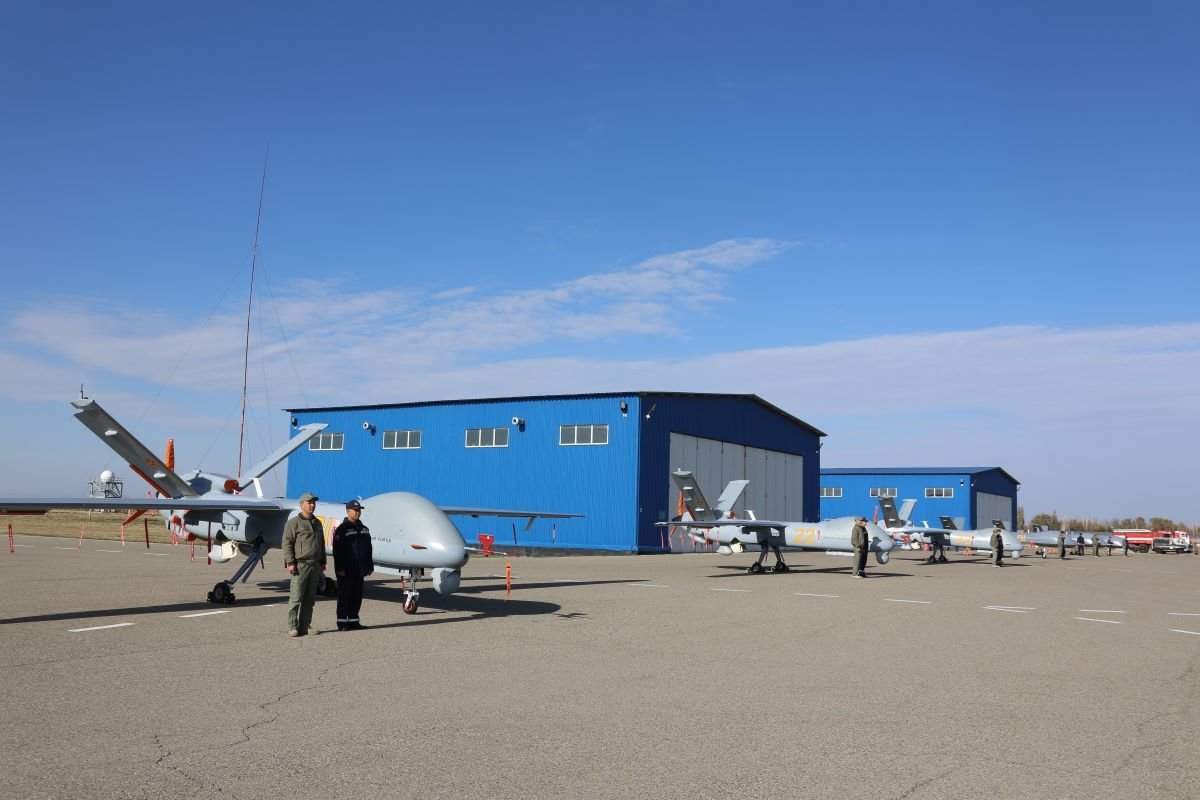Military analyst and retired Air Force Colonel Ermek Seitbattalov commented to Sarbaz.kz on the introduction of heavy unmanned aerial vehicles into service.

In Taraz, the training center for unmanned aerial vehicles' combat application and combat training added new models of aviation equipment to its arsenal. The Turkish-made "Anka-S" unmanned systems have been integrated into the weaponry. The adoption process of the "Anka-S" unmanned systems in the Kazakh army was conducted following all established procedures. After successful testing and commission evaluations, these new drones now reinforce the aviation equipment fleet of the training center.
However, conflicts in recent years, notably in Palestine and Ukraine, demonstrate the phenomenal effectiveness of small drones over medium and heavy ones.
"That's a somewhat distorted understanding. People don't see the full picture. But the reality is, if drones operate alone, they're an easy target for air defense systems, even a commonplace 'Oerlikon' (anti-aircraft gun) can shoot them down. Drones need to work within a system," clarified military analyst Ermek Seitbattalov to Sarbaz.kz.
The functioning of drones should be integrated with other branches of air power. As an example of effective use of such systems, Seitbattalov cited the Second and Third Nagorno-Karabakh Wars, in which Azerbaijan achieved a resounding victory. Meanwhile, such systems are absent from the conflict in Ukraine, and everything operates in a disjointed manner.
According to the military analyst, the system involves an organic integration of various types of equipment. At the satellite and strategic aircraft level, there are reconnaissance satellites and AEW&C (Airborne Early Warning and Control) strategic planes. They are linked to large strategic unmanned aerial vehicles (such as the RQ-4 Global Hawk). In the lower layers, there are operational-tactical and tactical unmanned aerial vehicles, like the ANKA-S, MQ-9 Reaper, as well as loitering munitions like the "Lancet." At the lowest level of the system, there are small reconnaissance copters and FPV drones.
"This whole system supports the troops and analyzes where air defense is stronger or weaker. Where to strike artillery, and where one can operate. Therefore, when they operate within the system, the operator sees the whole picture. Everything must be integrated and organic, like a human body. When it works alone, like a simple device, it's destined to be defeated," shared the military analyst.
Such a system is not present in Kazakhstan yet because there aren't specialists in the country who possess the understanding and vision required.
"It's a very good and right step, but it's not enough. It doesn't address the country's security problem. We need to work with space," emphasized E. Seitbattalov.
According to him, airspace has become part of the theater of operations. Since the 1990s, all attacks have been carried out from space and air. Even more, space is used not only as a platform for strikes but for reconnaissance and electronic warfare. By utilising space, devastating strikes can be made even from another continent or landmass.
"We see what's happening in the world now — Ukraine, Palestine, Venezuela. In this complex situation, Kazakhstan needs to find its place. We need to prepare for anything and it's time to buckle up. Just buying helicopters and being pleased with it, applauding it, that's not it," concluded the expert.